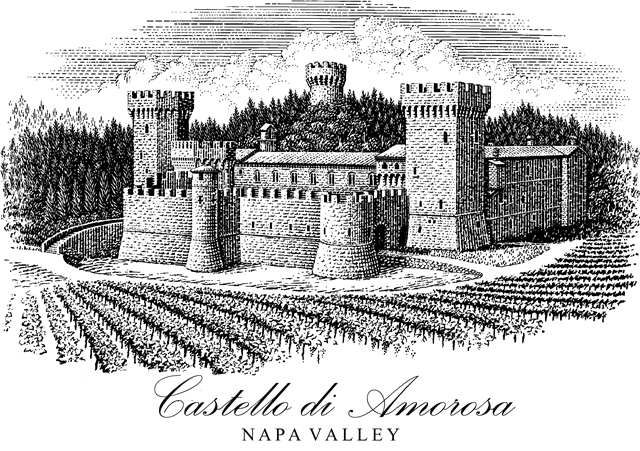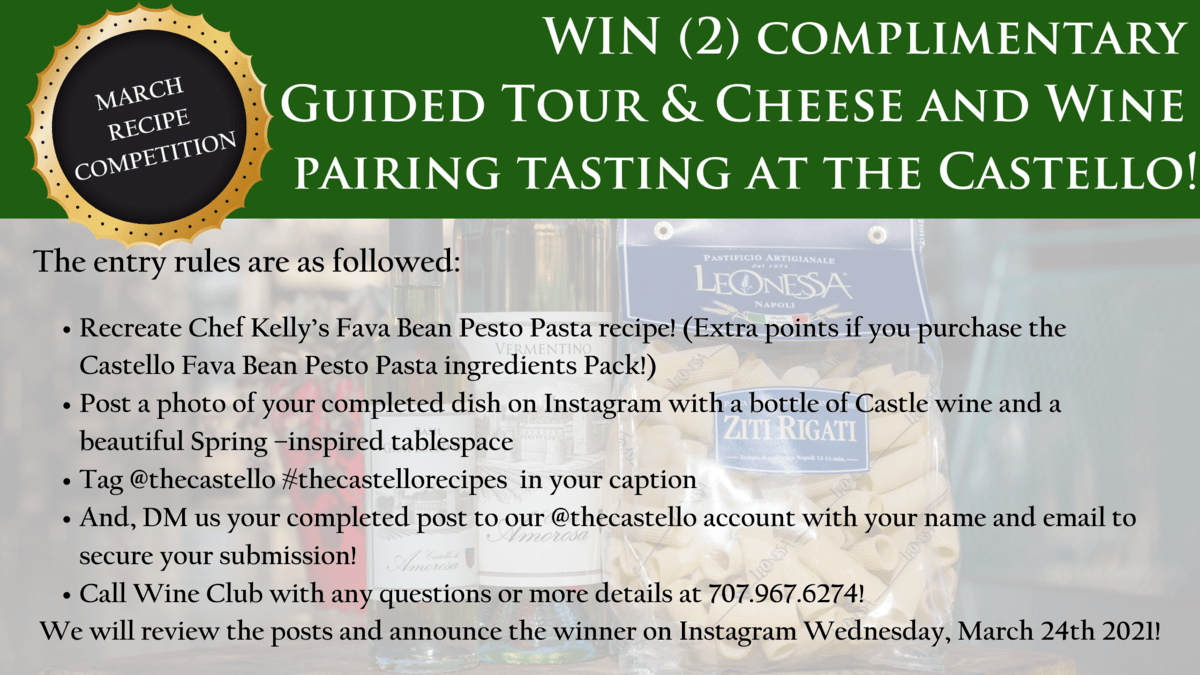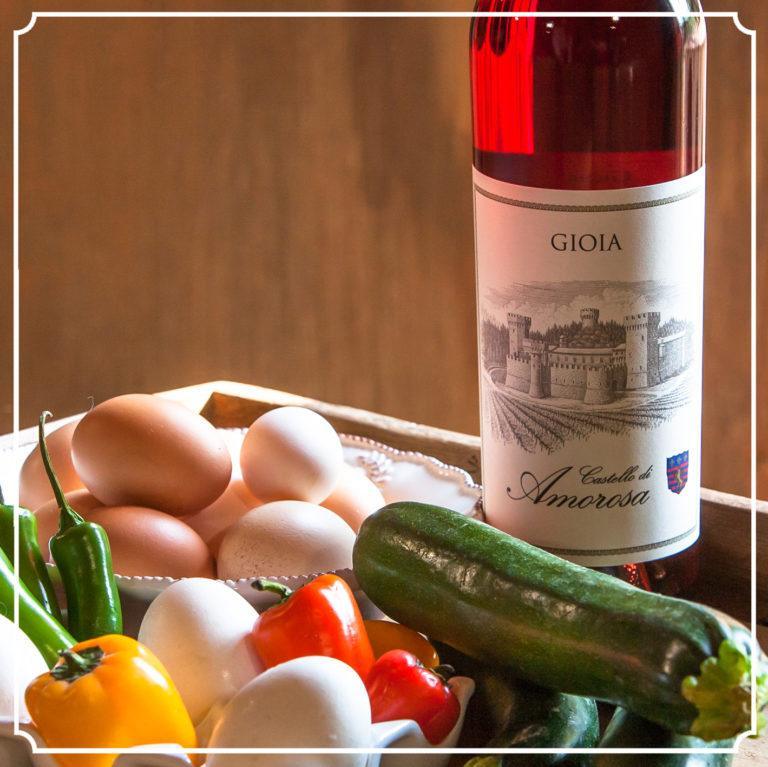Creamy Beef Stroganoff with 2020 Zingaro Old Vine Zinfandel

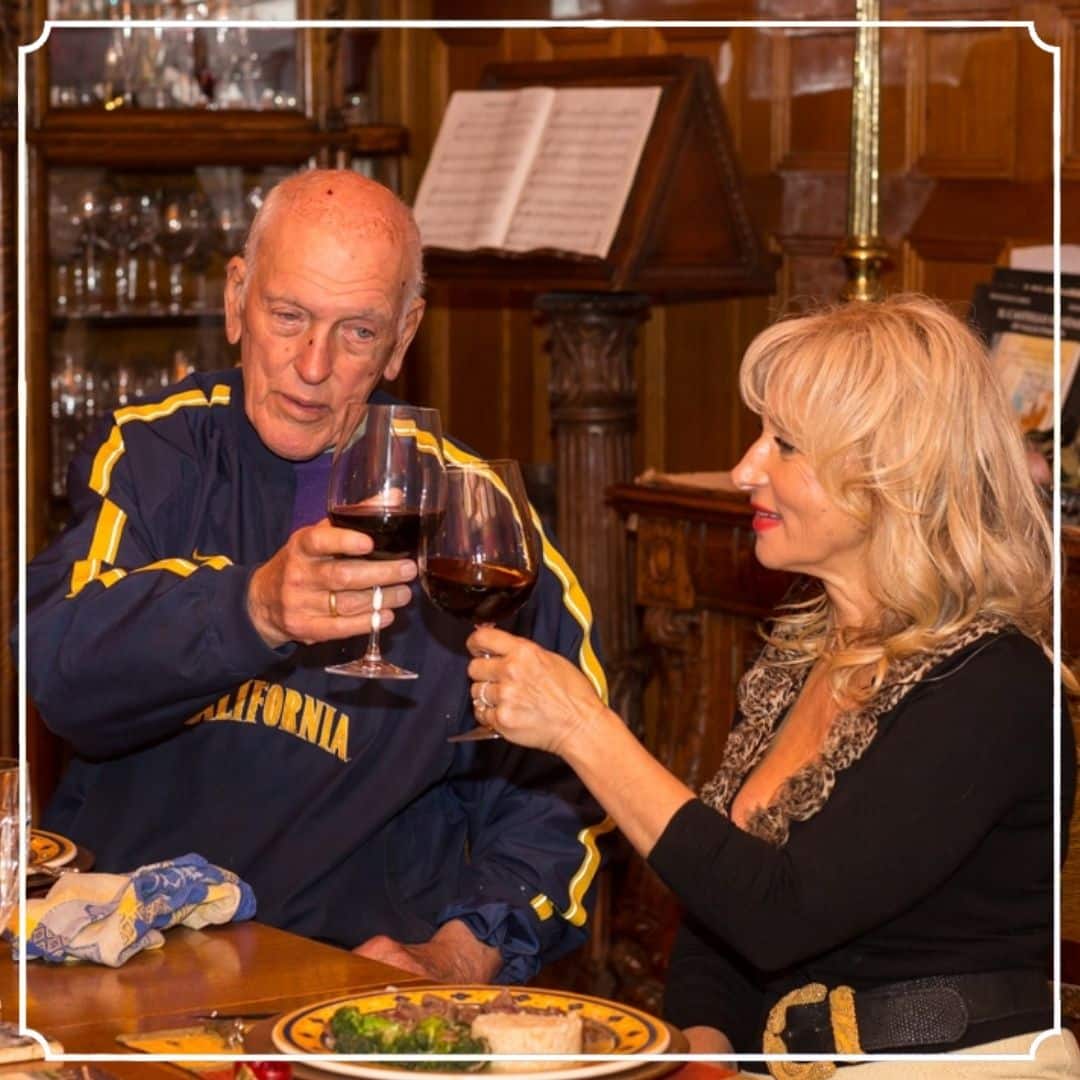
Recipe Date: February 7th, 2025
Difficulty: Easy
Measurements: Imperial (US)
Creamy Beef Stroganoff with Zingaro Old Vine Zinfandel
Indulge in the hearty comfort of homemade beef stroganoff, a dish bursting with rich, savory flavors. Tender strips of beef steak are cooked to perfection with sautéed onions and optional mushrooms, then simmered in a creamy sauce of beef stock, and sour cream. Serve it over a bed of risotto or try mashed potatoes, rice, or pasta for the ultimate comfort food experience.
This versatile dish pairs beautifully with any of Castello di Amorosa’s dry red wines. Today, we’re highlighting the bold and nuanced flavors of our Zingaro Old Vine Zinfandel. Its lush blackberry and spice notes perfectly complement the creamy, savory richness of the stroganoff.
Bon appétit and cheers!
Recipe Ingredients
- 1 tbsp-oil
- 1 1/2 tbsp-butter
- 1 onion, thinly sliced
- 2 packages of 8oz mushrooms, sliced (optional)
- 1/2 lbs- beef steak, cut in strips
- salt
- pepper
- 1/2 cup- beef stock
- 1 cup-sour cream
- 1 tsp Dill
- 4 cloves o Garlic
- ½ cup of red wine
Directions
- Heat 1 tbsp oil and 1 1/2 tbsp butter in a large skillet over medium heat. Add 1 thinly sliced onion and 2 packages (8oz each) of mushrooms (optional). Cook for about 8 minutes until softened. Remove from the skillet and set aside.
- In the same skillet, add 1/2 lb beef steak, cut into strips. Cook over medium-high heat for about 5 minutes until browned.
- Once the steak is cooked, season with salt and pepper to taste. Add 1/2 cup beef stock, 1 tsp dill, 4 minced garlic cloves, and ½ cup red wine. Reduce heat to medium and let simmer.
- Return the cooked mushrooms and onions to the skillet, stirring to combine. Let the mixture cook for about 6 minutes, until everything is bubbling. If the sauce is too thin, add more beef stock; if it’s thick enough, leave it as is.
- Stir in 1 cup sour cream and remove from heat.
- Serve hot with risotto, mashed potatoes, rice, or pasta, alongside steamed broccoli if desired.

Wine Pairing Suggestions
Bolognese


Recipe Date: December 3rd, 2024
Difficulty: Easy
Measurements: Imperial (US)
Bolognese Recipe
Recipe by Irina Sattui
This hearty, homemade spaghetti Bolognese sauce recipe is the ultimate holiday comfort food, perfect for gathering around the table with loved ones. Crafted with rich olive oil, a trio of aromatic vegetables, and a savory mix of ground beef and pork (or bison for a twist!), this sauce is simmered to perfection with robust red wine, tomatoes, and fragrant herbs. A touch of heavy cream lends a luxurious finish, making it the perfect pairing for al dente spaghetti.
Let the aroma fill your kitchen!
Recipe Ingredients
- 1/2 cup extra-virgin olive oil
- 1 medium onion, finely diced
- 1 medium carrot, finely diced
- 1 medium celery rib, finely diced
- 1/2 pound ground beef or ground bison
- 1/2 pound ground pork
- 4 garlic cloves, chopped
- 2 tsp tomato puree
- 1 cup dry red wine
- 1 (28-ounce) can peeled Italian tomatoes
- 1 cup chicken bone broth
- Salt
- Freshly ground black pepper
- 1 good sized handful fresh parsley or basil
- 1 tsp dried oregano
- 2 bay leaves
- 1/4 cup heavy cream
- ½ pound spaghetti
Directions
Heat the olive oil in a large pan over medium heat. Add the onions and sauté until lightly golden, 2 to 3 minutes. Add the carrot and celery and fry for 5 min. Add the garlic and fry for another minute.
Add the ground beef, and the ground pork. Fry until no pink shows at all in the meat.
Add the wine, let it simmer until it has evaporated.
Add tomato paste sauté for a few min, then add canned tomatoes, parsley, oregano, 2 bay leaves and season with salt and pepper, cream and stir thoroughly to coat all ingredients well.
Cook, uncovered, for 1-2 hours, stirring from time to time.
To keep it from sticking, add 1 cup of chicken bone broth.
Wine Pairing Suggestions
Pizza & Wine Pairing


Recipe Date: June 20th, 2023
Difficulty: Easy-Moderate
Measurements: Imperial (US)
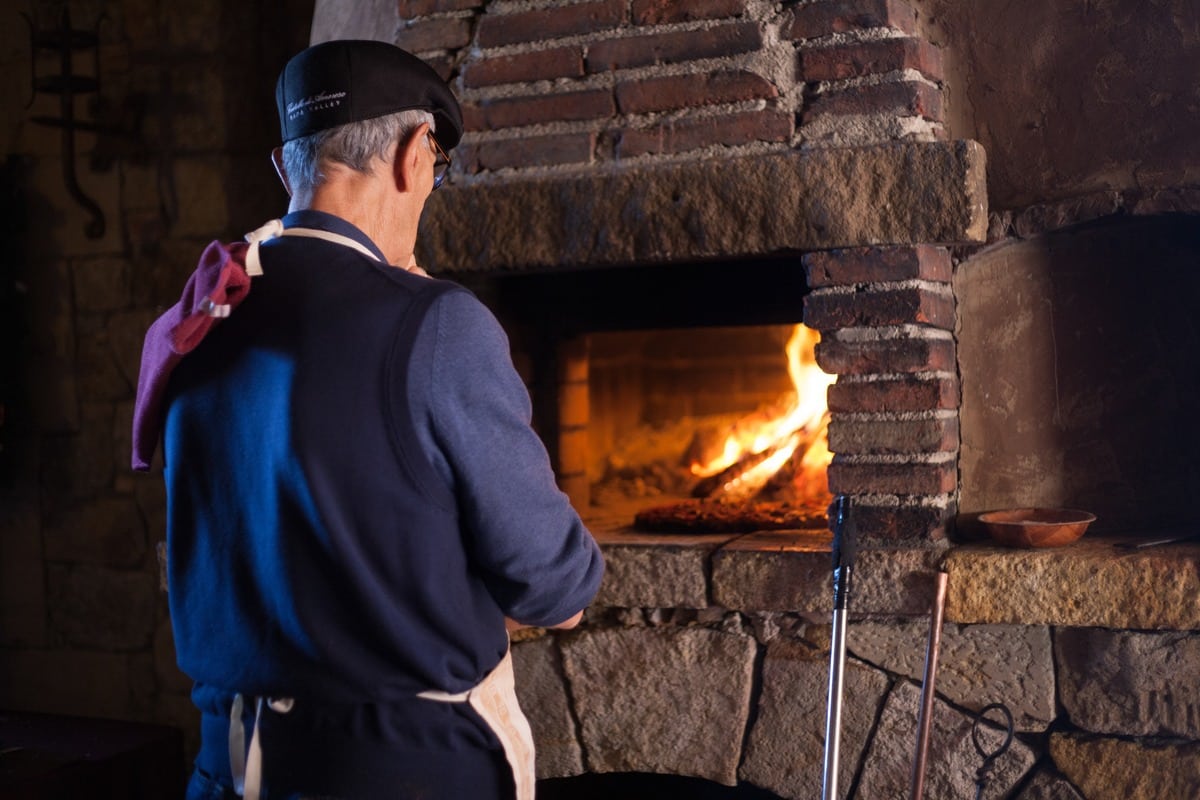
The Best Pizza & Wine Pairings
The inseparable duo of pizza and wine, an exquisite combination that tantalizes the senses and seduces the palate. Optimal wine pairings often align harmoniously with ingredients hailing from the very regions where the grapes themselves have flourished. And when it comes to pizza, the toppings are like a canvas for regional flavors that can truly complement the wine.
Nestled within the walls of our magnificent castle, built-in fire stone ovens are an essential part of our event experience. We pay homage to the modern birthplace of pizza in the southwestern Italian region of Campania, home to the vibrant city of Naples. It is here a story of culinary ingenuity and national pride. Legend has it that on June 11, 1889, the Neapolitan pizza maker Raffaele Esposito crafted a pizza fit for a queen, Margherita of Savoy, to honor her visit. This “Pizza Margherita” was adorned with tomatoes, mozzarella, and basil, representing the colors of the Italian flag. While recent research casts doubt on this legend, the story persists, and the pizza itself has become an icon of Italian cuisine.
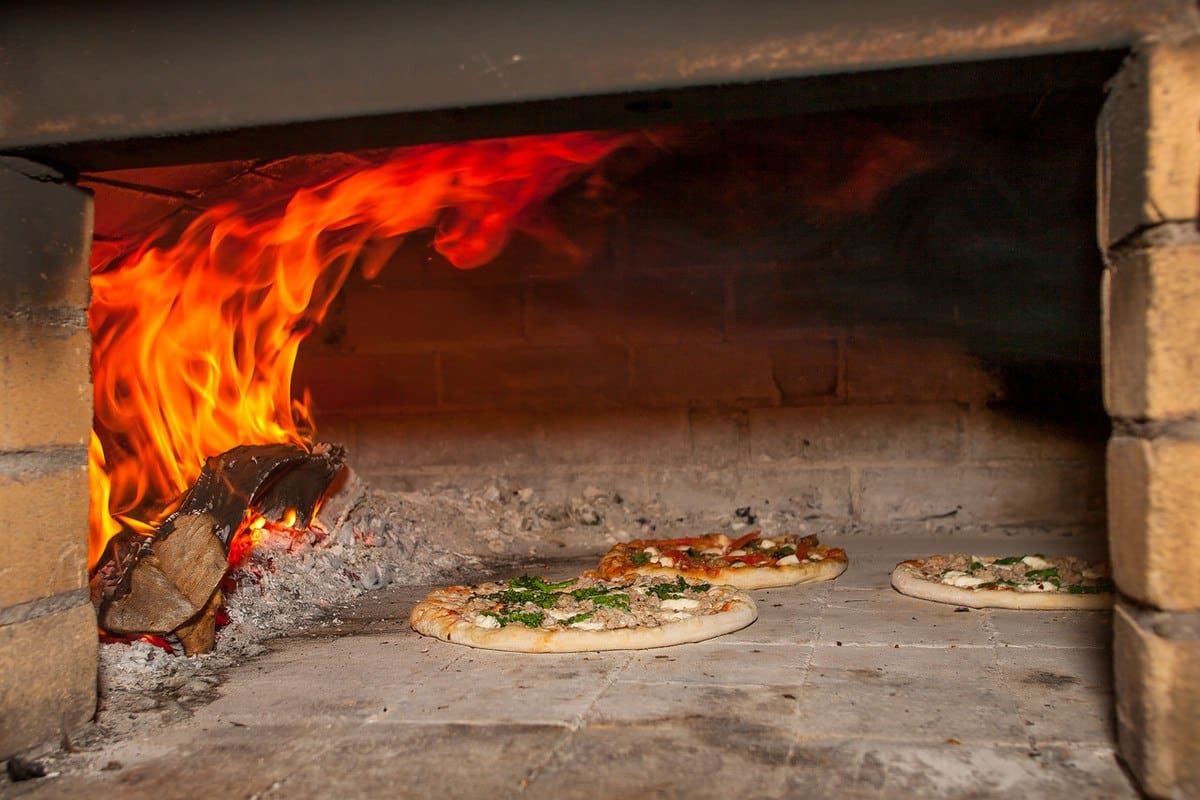
In the world of pizza, and countless variations have emerged to tantalize our taste buds. In Naples, the birthplace of pizza, you can find renowned pizzerias such as Da Michele, Port’Alba, Brandi, Di Matteo, Sorbillo, Trianon, and Umberto, each adhering to even stricter standards than the specified rules. The pizza bases in Naples are soft and pliable, offering a delightful contrast to the thin and crispy Roman style. And let us not forget the “pizza al taglio,” baked in rectangular trays with a wide variety of toppings and sold by weight, offering a whole new world of flavors.
No doubt Pizza has become a global phenomenon, and its popularity has no limits. In fact, an astounding 350 slices are devoured every second, while 40% of Americans indulge in pizza at least once a week. The magic of pizza lies in its universal appeal, a taste that transcends borders and cultures. It traveled across the Atlantic with the wave of Italian immigrants who made up a significant portion of the influx of people to the United States between 1880 and 1920. They brought with them not only their dreams but also their culinary traditions. Today, pizza reigns supreme as one of the most popular foods in the world, with approximately 5 billion pizzas consumed each year.
Finding the perfect pairing can be a delightful challenge. With its myriad of styles, flavors, and qualities, pizza provides endless choices. At Castello di Amorosa we have curated an extraordinary Wine & Pizza guide that will transport you to new heights of culinary bliss. We’ve sought inspiration from the Italian masters themselves, crafting pairings that will make your taste buds dance with joy.
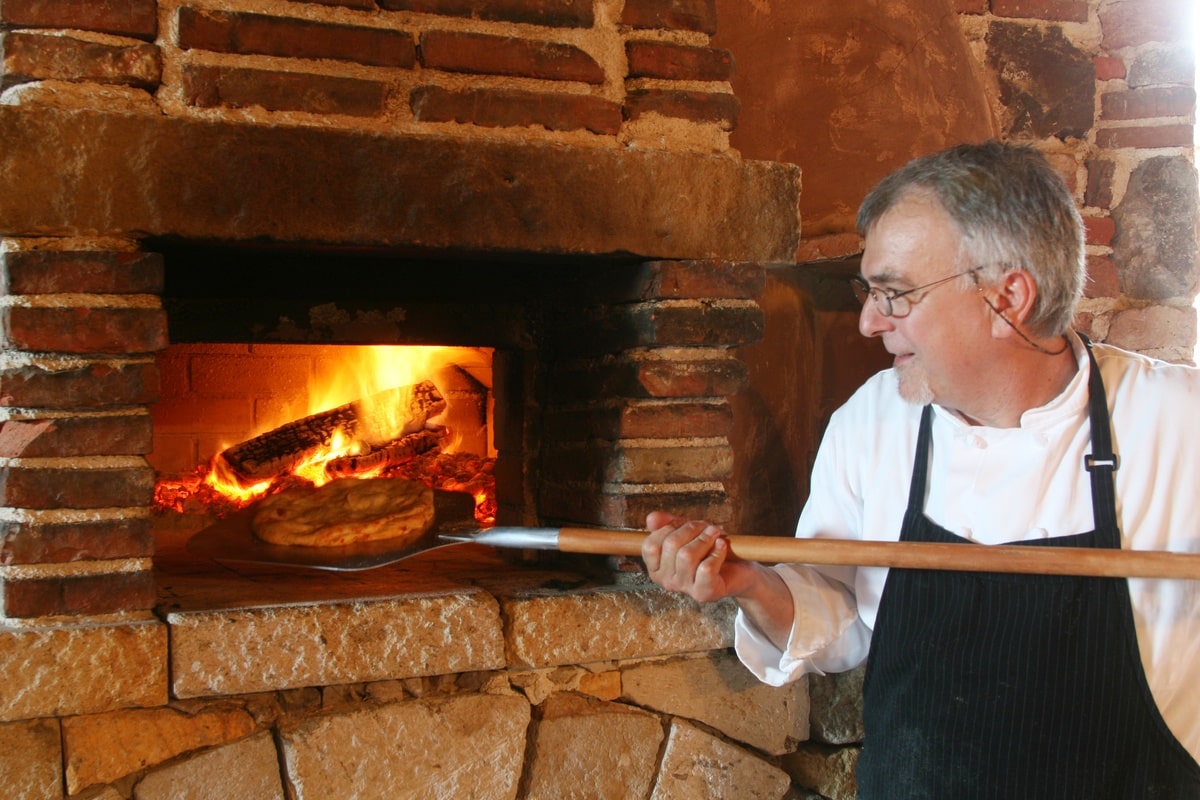
Barbera The Pizza Wine
When it comes to pairing wine with pizza, one versatile option stand out: Barbera. This medium-bodied, fruity Italian varietal complements the flavors of pizza, especially those with herbal and tomato elements. Its smooth, easy-drinking nature and moderate tannins make it an excellent companion for the savory richness of pizza, particularly when topped with salty meats like prosciutto or pepperoni.
What makes Barbera special is its ability to bridge the gap between different wine preferences. It strikes a balance between light and heavy red wines, making it an ideal choice for a diverse group of wine enthusiasts. For the perfect wine and pizza pairing, consider the key elements of the pizza itself: the thickness of the crust, the charcoaling, the type of sauce (whether delicate, hearty, or something different like pesto), the cheese (mozzarella, burrata, or goat cheese), and the meat toppings (prosciutto, pepperoni, or sausage).
Barbera shines particularly bright because its high acidity complements the acidity of tomato-based sauces, creating a harmonious pairing. They offer good acidity, low tannins, and a fruit-forward profile that embraces the flavors of pizza rather than overpowering them.
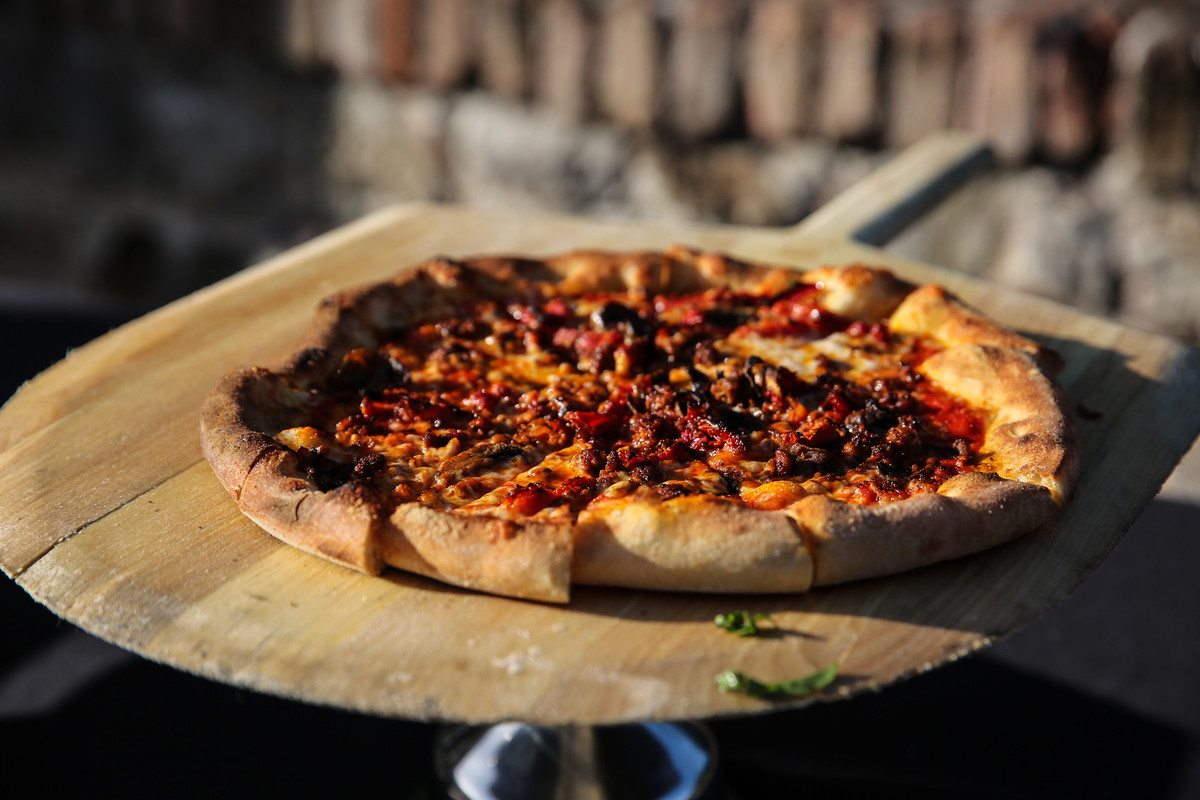
Classic Tomato Pizza & Wine Pairings
These classic Pizza & Wine pairings, lend a helping hand to help balance tomato sauce based pizza.
- Barbera with Classic Pepperoni: Barbera is a red wine known for its high acidity and fruity flavors. Classic pepperoni pizza, with its slightly spicy and savory pepperoni toppings, pairs well with Barbera. The wine’s acidity cuts through the richness of the pepperoni and complements its flavors, enhancing the overall enjoyment of the meal.
- Sangiovese with Italian Sausage and/or Pepperoni: Sangiovese is a red wine with medium to high acidity. The acidity helps cut through the richness of Italian sausage and pepperoni, which can be fatty and savory. The acidity in Sangiovese refreshes the palate and balances the flavors, making it a great pairing. It pairs exceptionally well with herbal and tomato flavors, making it an ideal match for pizza.
- Chardonnay with Quattro Formaggio: Chardonnay is a full-bodied white wine with a rich and buttery profile. Quattro Formaggio (Four Cheese) pizza usually features a combination of creamy and flavorful cheeses. The richness of the Chardonnay complements the creamy cheeses and enhances their flavors, creating a harmonious pairing.
- Vermentino or Dry Gewürztraminer with Canadian Bacon, Pineapple, and Jalapeño: Vermentino and Dry Gewürztraminer are both white wines with vibrant acidity. The combination of Canadian bacon, pineapple, and jalapeño on a pizza creates a balance of sweet, salty, and spicy flavors. The acidity in Vermentino or Dry Gewürztraminer helps refresh the palate and enhances the contrasting flavors, making it an enjoyable pairing.
- Gioia Rosé with Margherita Pizza: Rosé is a versatile wine that can pair well with a variety of dishes. Margherita pizza typically features simple and fresh flavors, including tomatoes, basil, and mozzarella. The light and fruity characteristics of a Rosé complement the lightness of the pizza and its tomato-based sauce, creating a refreshing and harmonious pairing.
- Gioia Rosé with BBQ Chicken Pizza: Its refreshing nature acts as a palate cleanser, balancing the savory elements. Versatile and adaptable, Gioia enhances the overall balance and depth of flavors in BBQ chicken pizza, creating a delightful and well-rounded pairing experience.
- Pinot Noir with Mushroom Pizza: The earthy, nuanced flavors of a mushroom pizza find their match in a well-balanced Pinot Noir. The fruity notes of the wine harmonize with the earthy mushrooms, while the bright acidity cuts through any richness, providing a delightful pairing.

White Pizza & Wine Pairings
These Pizza pairings contain white sauces, like Alfredo, Garlic and more.
- Pinot Bianco or Pinot Grigio with Chicken, Spinach, and Mushroom with Alfredo Sauce: Bianco or Pinot Grigio are typically light-bodied white wines with crisp acidity. They pair well with dishes that have creamy and rich sauces, such as Alfredo sauce. The wine’s acidity cuts through the richness of the sauce, while its lighter body complements the flavors of chicken, spinach, and mushroom without overpowering them.
- Simpatica Riesling with Thai Chicken Pizza: The off-dry sweetness and vibrant acidity of Riesling balance the spiciness of a Thai chicken pizza, creating a harmonious fusion of flavors.
- Spumante Brut with Prosciutto and Arugula Pizza: The crisp and effervescent Spumante cuts through the richness of prosciutto and pairs beautifully with the peppery arugula, adding a refreshing touch.
- Spumante Rosé with Spinach and Feta Pizza: The vibrant acidity and delicate bubbles of Spumante Rosé enhance the flavors of spinach and feta cheese, creating a refreshing and tangy pairing.
- Il Passito – Late Harvest Sauvignon Blanc with Pear Gorgonzola Pizza: The luscious sweetness and honeyed notes of Late Harvest Sauvignon Blanc complement the combination of ripe pears and creamy Gorgonzola on a pizza.
- Cabernet Sauvignon with Sirloin Steak and Gorgonzola with White Sauce: Cabernet Sauvignon is a bold and full-bodied red wine with high tannins. The richness and intensity of the wine make it an excellent match for the robust flavors of sirloin steak. The tannins in Cabernet Sauvignon also help cut through the richness of the steak and pair well with the tangy and pungent flavors of Gorgonzola cheese.
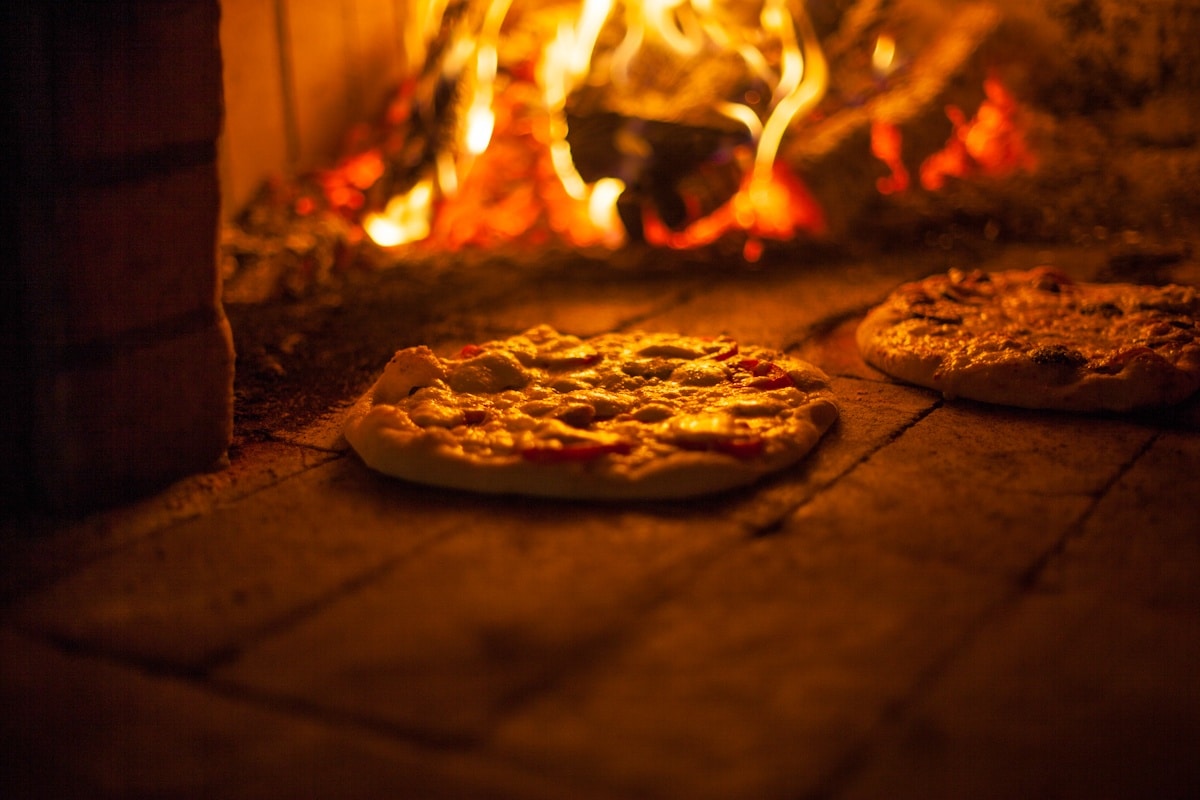
Linguine allo scoglio

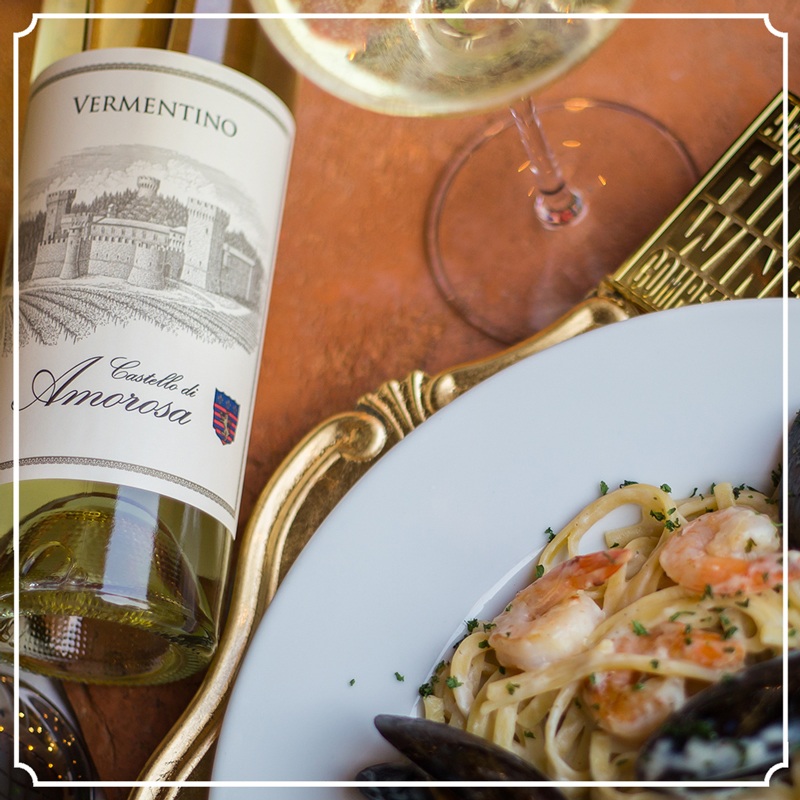
Recipe Date: February 8th, 2023
Difficulty: Easy
Measurements: Imperial (US)
Linguine Allo Scoglio Recipe
From cucineditalia
As the warmer months inch closer on the calendar, a rich seafood dish could be exactly what you’re missing. Look no further than this Italian seafood pasta recipe known as Linguine allo scoglio, linguine pasta cooked al dente in a tomato-based sauce with mussels, clams, and shrimp. The ideal accompaniment to this dish is a medium-bodied soft rosé, such as the Italian Rosato Gioia, a wine capable of balancing out the slight acidity of the tomato sauce. Dry white wines are a wonderful pairing as well. The best white wine with this traditional Italian seafood pasta is our Vermentino from Temecula Valley. A lively and crisp white wine with tropical aromas of white peach, and citrus complemented by a bright acidity and subtle minerality make it the perfect pairing for this seafood dish.
- 350 g (12 oz) of Spaghetti
- 1 kg (2 pound) of Clams with shells
- 1 kg (2 pound) of Mussels with shells
- 300 grams (2/3 pound) of Squid
- 300 g (2/3 pound) of Shrimps
- 200 g (1/2 pound) of ripe Cherry Tomatoes
- 1 Fresh hot chilli pepper
- 2 Cloves of garlic
- 5 Tablespoons of extra virgin olive oil
- 150 ml (1/2 cup ) of dry white wine
- Bunch (1/3 cup) of fresh parsley
- Salt to taste
Directions
1) Rinse clams under running water and then let them soak in plenty of cold water with a handful of coarse salt. The clams should remain in the cold water for at least an hour, preferably two, to purge. Keep this time in mind when you decide to make this recipe. Place the clams in a pan and cook over high heat covered with a lid. Wait for them to open, this will take about 3 minutes.
2) Now strain the clam sauce with a fine strainer but DO NOT throw away their water, keep it aside. Finally shell the clams, keeping some clams with their shells that you will use for the final decoration of the dish.
3)Clean the mussels by scraping off any impurities with the blade of a small knife. Tear off the byssus, that is the bearded part that comes out of the shell. Then, with the help of a stainless steel sponge, clean well their shells. Place the mussels in a pan and cook over high heat, cover with lid. Wait for them to open, this will take about 3 minutes. We prefer to cook clams and mussels separately in case the clams release a lot of sand.
4) Now strain the mussels sauce with a fine strainer. Finally shell the mussels, keeping some of them with their shells: you will use them for the final decoration of the dish.
5) Wash the squid under running water, then remove the entrails, the eyes, the central beak and the internal bone. Finally remove the skin and cut them into rings. Set aside.
6) Clean the shrimps, taking care to remove the dark filament, all the shell and the heads. Set aside. Wash and chop the cherry tomatoes then chop the parsley. Set aside.
7) In a large saucepan, sauté the peeled garlic cloves in the extra virgin olive oil. Add the red hot chili pepper and the squid. Cook for about 2 minutes over medium heat.
8) Then raise the heat and add the white wine. Stir and allow the alcohol to evaporate. Finally add the mussels and clams and lower the heat. Add a ladle of clams water and then the chopped tomatoes. Mix and cook over high heat for about 10 minutes.
9) Finally, add the shrimp and chopped parsley. Cook over medium heat for about 3 minutes (shrimp have very short cooking times). Italian seafood sauce is ready. Remove the garlic cloves and chili pepper (see note below).
10) Now cook the pasta. Bring plenty of salted water to a boil. Cook the spaghetti according to the cooking times described on their packaging. Using a slotted spoon, drain the spaghetti 3 minutes before the end of cooking time.
11) Place them directly in the pan with the seafood sauce. Stir and finish cooking the spaghetti in the pan for another 3 minutes over high heat. This way they will better absorb the flavor of the seafood sauce. Stir well and transfer the best Spaghetti allo Scoglio you have ever eaten to a serving dish. Garnish with the shells kept aside and serve.
Notes
Garlic & Chilli Peppers: We chose to leave the garlic and hot chili pepper whole. This way you can easily remove them from the sauce. If you prefer, though, you can chop them up and leave them in the sauce, depending on your taste.
Pair w/ Our Vermentino, Enjoy and cheers!
Wine Pairing – Vermentino
The Love of Cheese & Wine


Wine & Cheese Pairings
Raise a glass to one of the best duos in history, Wine & Cheese. Many pairings that are considered classics, emerged from the centuries-old relationship between a region’s cuisine and their wines. This powerful duo remains the key to our heart and maybe some Castle doors. While enjoying our Castello wines, there are a few tried & true combinations that will standout.
There are many factors that go into the pairing of wine and cheese. The best pairings complement each other particularly well when considering texture, fat, acidity, and salt.
In addition to drying and concentrating the cheese, age introduces new flavors. Rind cheeses like Brie remain gooey and spreadable, but the cheese develops earthy notes after a few months of aging in the caves. Older cheeses like Gruyère acquire deep nutty flavors. Blue cheeses develop pungency from the mold in their veins. Washed-rind cheeses like Époisses develop a funky, flavor that you either love or hate.
Wines also run the spectrum from delicate to bold, and their depth and complexity can correlate with their age. Young wines are fresh and spirited, with lively aromas and bright flavors of fruits, flowers, citrus, herbs, or spice. Wines that have spent time in cask or bottle have had a chance to acquire more nuance. In addition to their primary fruit, they take on secondary notes of oak, toast, earth, oxidation, minerals, and more. Like cheeses, these wines tend to be more complex and savory than their younger counterparts.

A Divine Pairing From The Gods
In a study at ChemoSens in France, researchers determined that cheese improved the perception of fruit aromas, reduced the duration of astringency of red wines, and heightened the taste of white wine. Cheese which is customarily high in fat, coats the mouth and blocks taste receptors to beverages. The acidity and sweetness of a well-paired wine can cut through this creamy barrier to create an excellent mouthfeel.
Cheeses vary in moisture content, fat content, texture and flavor. Wines also vary in acidity, sweetness, body, and structure. A few basic guidelines will bring you cheese & wine success.
The main concept behind pairings is that certain elements (such as texture and flavor) in both cheese and wine interact with each other, and thus finding the right combination of these elements will make the entire dining experience more enjoyable.

Rules of Cheese & Wine Pairing
Pair by flavor intensity. Consider the effect age has on the intensity of wine. We can see how young cheeses might partner best with sparkling crisp whites, dry rosés, and reds with good acidity. Older cheeses need wines with more body and complexity. The oldest cheeses, those that are the most rich and nutty, pair best with wines that have ample body and structure. Cheeses become bolder and more complex as they age, taking on concentrated flavors. If you have a 3 year aged cheddar, it’s going to have a richness to it that needs a wine with an equal amount of depth.
Pay Attention To Texture. Cheese changes drastically in texture, which is based on what type of milk, what style of cheese, and how long it has been aged for. Young, fresh, and rindless cheeses are soft, and when served at room-temperature can become gooey. Hard cheeses, on the other hand, need to be crumbled or cut.
Watch those tannins. Tannic rich red wines pair wonderfully with bold aged cheeses, tannins help bind to protein and fat. T same process makes tannic wines feel far too astringent with young cheeses; they tie up what little fat’s available, leaving you with a chalky and metallic aftertaste.
Salt loves sweet. Sweet wines balance the salty cheeses like Blue cheese, aged Gouda or Feta. The salt in the cheese increases the sweetness in the wine.
Cheese loves fruit and nuts. Fruits go very well with young cheeses like Brie. Sweet dried fruits are wonderful with salty cheeses like Blue, Buttery, bitter nuts are tasty with rich Cheddar.
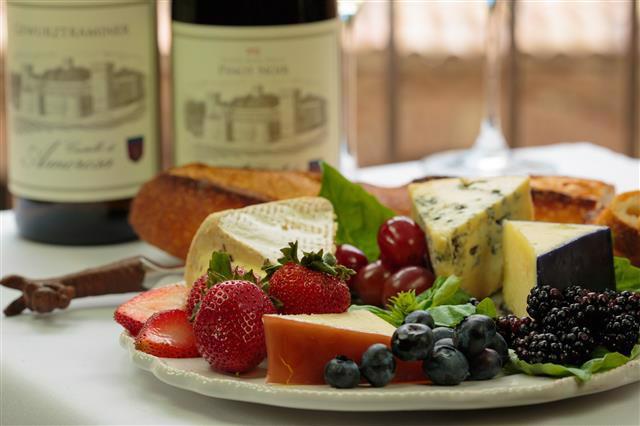
Castello Wine & Cheese Pairings Guide
Explore our favorite Castello wine & cheese pairings. Try these basic wine and cheese combinations at home.
- Cheddar – Cabernet Sauvignon
- Cotswald – Merlot
- Pecorino Toscano – Sangiovese
- Grueyere – Pinot Noir
- Brie – Spumante del Castello
- La Tur – Gewürztraminer
- Goat Cheese – Pinot Grigio
- Goat Cheese – Pinot Bianco
- Fiore Sardo – Vermentino
- Pepper Jack – Gioia
- Blue Cheese – Il Passito
- Gorgonzola – Moscato
Kick it up a notch. Add these elements to elevate a cheese pairing to a sweet and salty palate sensation. These items also make a great addition to any charcuterie board.
- Nuts – Buttery, bitter nuts are tasty with rich cheeses like Cheddar.
- Fruits – Fruits go very well with young cheeses like Brie. Sweet dried fruits are wonderful with salty cheeses like Blue cheese.
- Balsamic Reduction – Serve over hard cheeses or a Caprese Salad. A reduction of balsamic will elevate a cheese pairing to a sweet and salty palate sensation.
- Honey – This is an elegant addition to any wine & cheese board. Honey adds a fair bit of complexity to a long list of cheeses. The key to pairing honey and cheese is to pair a light honey with a mild cheese and more rounded flavored honey with a more intense cheese. Among the best honey & cheese pairings are Provolone cheese and Cabernet Sauvignon. Honey & blue cheese create a contrast that could create a fan of even the harshest blue cheese critics. Goat cheeses, Gorgonzola, Pecorino Romano, Brie all go great with honey.
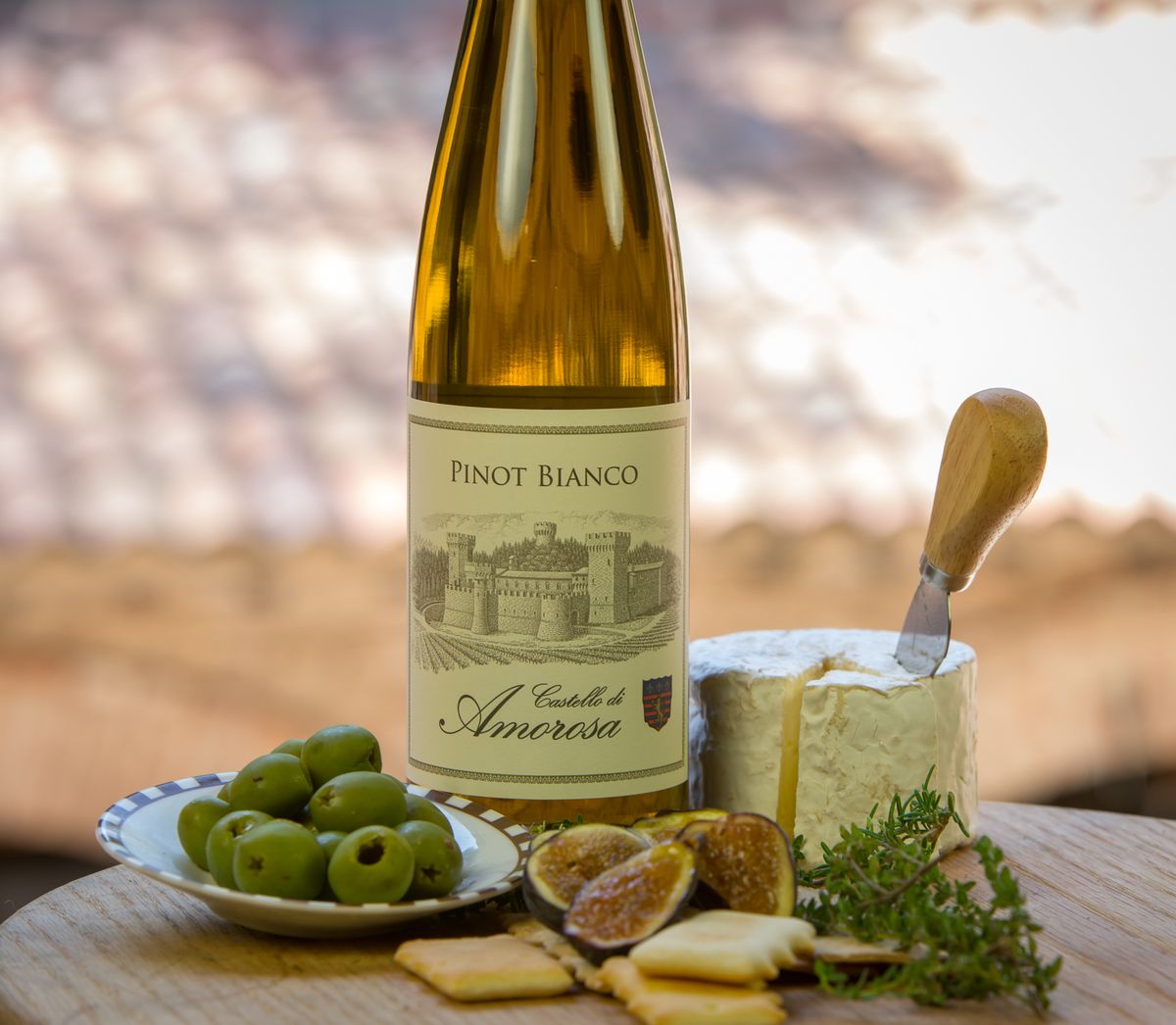
Cabernet Sauvignon & Cheddar
Americas most popular wine has a bevy of cheeses that work well. Complex flavors often stand up the best to sophisticated profile of Cabernet Sauvignon. Your best cheese for this wine is aged Cheddar which will stand up to the strong cheddar with its lingering after taste.
Why it works: These semi-hard/hard style cheeses help to elevate the dark fruit flavors of the wine. However try to remember the bigger the oak in the wine, the fewer the cheese choices you have.
Also try: Aged Gouda, Comté
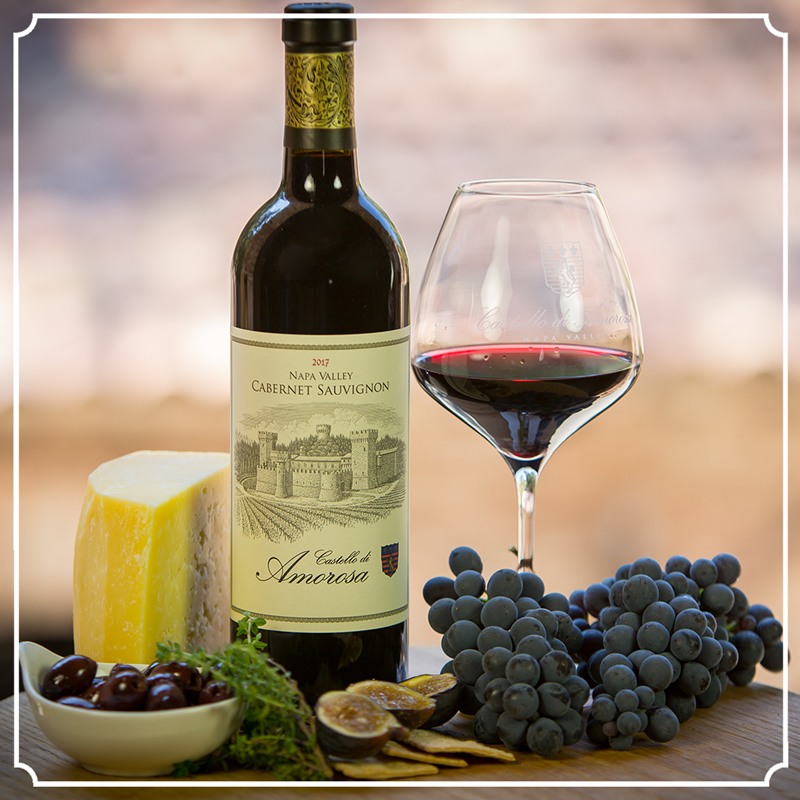
Merlot & Cotswald
This is where rich fatty cheeses can play, cheddar or my fave, Cotswald which I lovingly call Baked potato cheese as it is creamy, buttery, and full-flavored like cheddar. The cheese has chives and onions so it is rich & savory. Perfect for the tannins in merlot.” – Castle Sommelier Mary Davidek
Why it works: Cotswald is a creamy Double Gloucester cheese laced with onion and chives. The rich creamy Cotswald plays well with the tannic Merlot.
Also try: Asiago, Brick, Muenster, Gouda and Colby
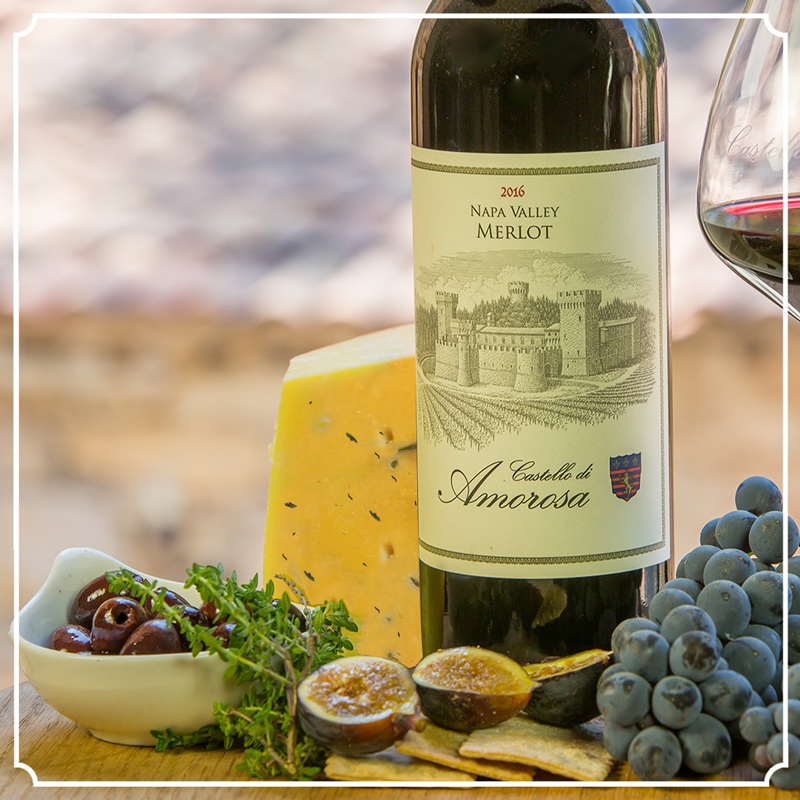
Sangiovese & Pecorino
Both eternally popular in Italy, the pair have been friends for well over 100 years. The beloved Italian grape brings bright cherry, earthy tomato, and savory garden herb to the table while the aged Parmigiano-Reggiano brings a rich complex nuttiness. Sangiovese also pairs well with the very popular Parmesan and Mozzarella.
Why it works: Sangiovese is known for its full body, acidity, and bold character. The complex character of a Pecorino brings a rich nuttiness with the vibrant acidity of Sangiovese.
Also try: Parmigiano, Grana padan, Fontina, Mozzarella
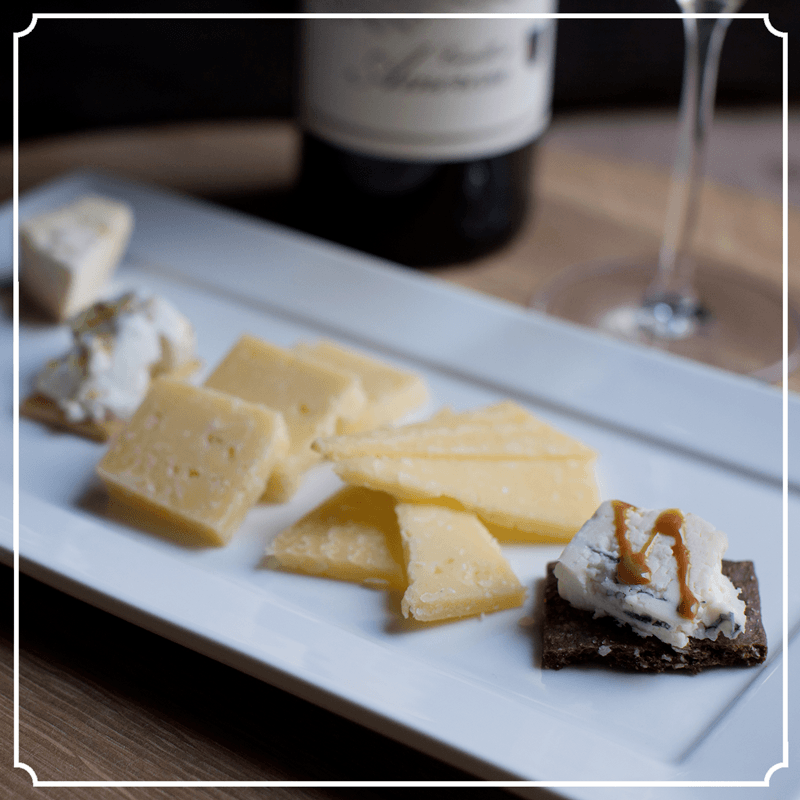
Pinot Noir & Grueyere
Pinot Noir works well with most soft cheeses but the nutty flavors of the Grueyere play a great contrast to the dark fruits in Pinot Noir. The subtle acidity and polished tannins further the complex relationship in the pairing.
Why it works: The berry fruit in the rich red wine complements the flavor of this medium-firm cheese without overpowering it. They both have just enough aroma and complexity to make things interesting.
Also try: Comté, Emmenthal, Goud
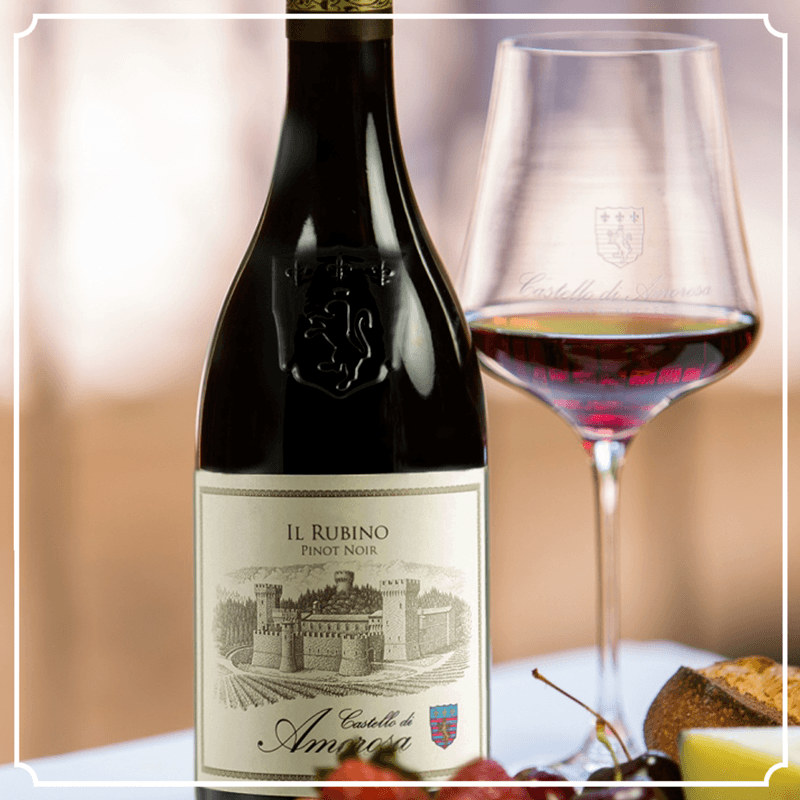
Spumante & Brie Cheese
Triple-cream soft cheeses (brie, Camembert) are the perfect match. But there are more great cheese pairings with Champagne and other sparkling wines.
Why it works: The sparkling wines crisp acidity plays well with the complex buttery and earthy flavors of Brie. The sparkling notes help temper the thick creamy texture and leave a refreshed mouthfeel.
Also try: Camembert, Roquefort
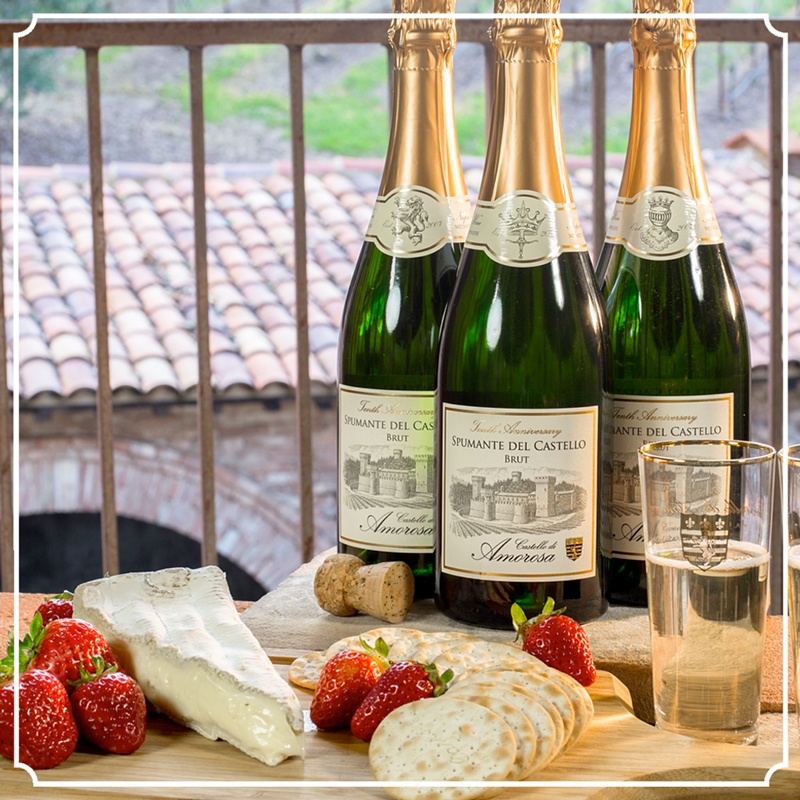
Gewürztraminer & La Tur
La Tur is an Italian triple cream from the Piedmont region of Italy and is made from an equal mixture of cow, sheep and goat milk. Typically with double and triple creams a bright white wine like dry Gewurztraminer can work best. Typically salty cheeses and Gewürztraminer are not the best together, so opt instead for mild cow’s milk cheeses.
Honey can be added to this duo for an extra flavor sensation.
Why it works: The heavy triple cream can be easily cut through by the bright dry Gewürztraminer, making for a refreshed palate and mouthfeel.
Also try: Muenster, Gruyère, Roquefort, Capocollo, Stilton, Gorgonzola, Gouda, Boursin, Swiss cheese, Pepper Jack
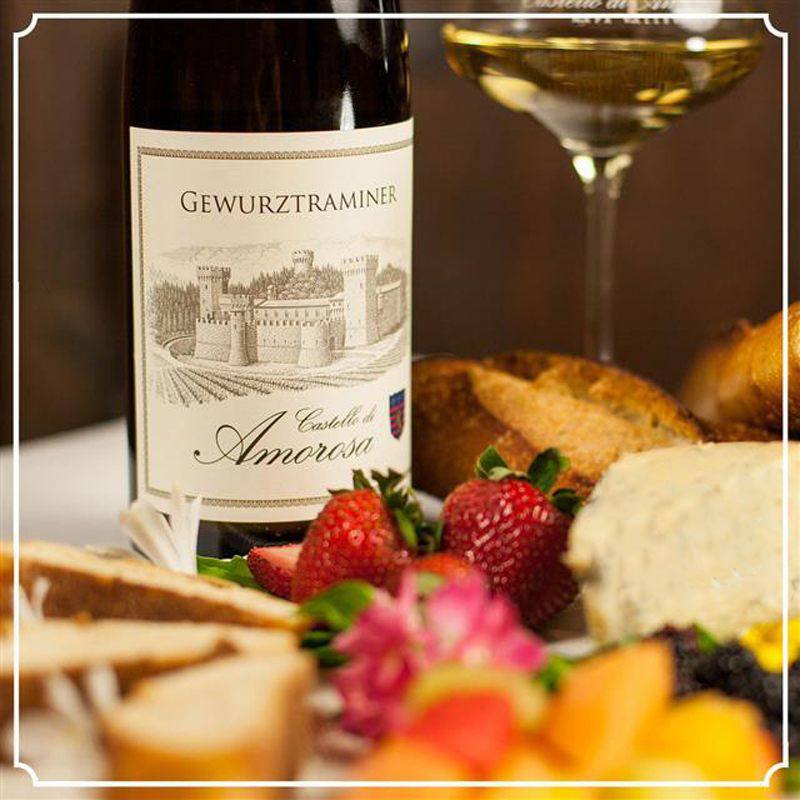
Pinot Bianco & Goat Cheese
“The tang sweetness combined with a creamy goat cheese like Sonoma chevre by Laura Chenel or Capricho de Cabra from Spain, drizzle a little of our Basil grape seed oil on it and total Goat love with Pinot Bianco.” – Castle Sommelier Mary Davidek
Why it works: The crisp acidity of Pinot Bianco is the perfect compliment to the creamy fatty notes of Goat Cheese.
Also try: Feta, Baby Swiss, Gouda, Majorero, Mahon, Dry Jack

Pinot Grigio & Goat Cheese
Because of its tangy and salty flavor, it pairs well with the crisp fruitiness of Pinot Grigio.
Why it works: The crisp acidity of Pinot Grigio is the perfect compliment to the creamy fatty notes of Goat Cheese.
Also try: Fresh Mozzarella, Mild Cheddars, Brie, Baby Swiss
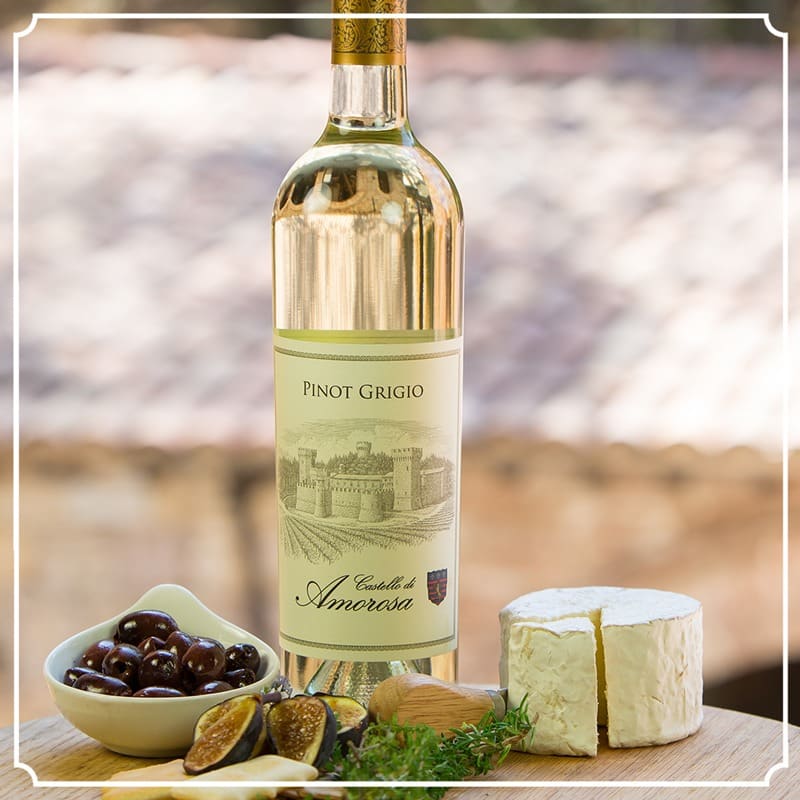
Vermentino & Fiore Sardo
Believed to date back to the Bronze Age, Fiore Sardo hails from the second largest island in the Mediterranean Sea, Sardinia, Italy. A lighter, crisper white wine like Vermentino, tends to be refreshing and fruity which works well with the semi-hard, smoked cheese.
When drinking Vermentino you should always avoid overly pungent fromage and focus on fresh cheeses.
Why it works: This is one of those hyper-regional parings. Both Vermentino and pecorino come from the small island of Sardegna, Italy. Engulfed by the salty sea, both the grape vines and the scrubby bush the sheep feed on take on similar light, savory, citrus, and salty characteristics.
Also try: Ricotta, Buffalo Mozzarella, Goat Cheese, Pecorino, Feta
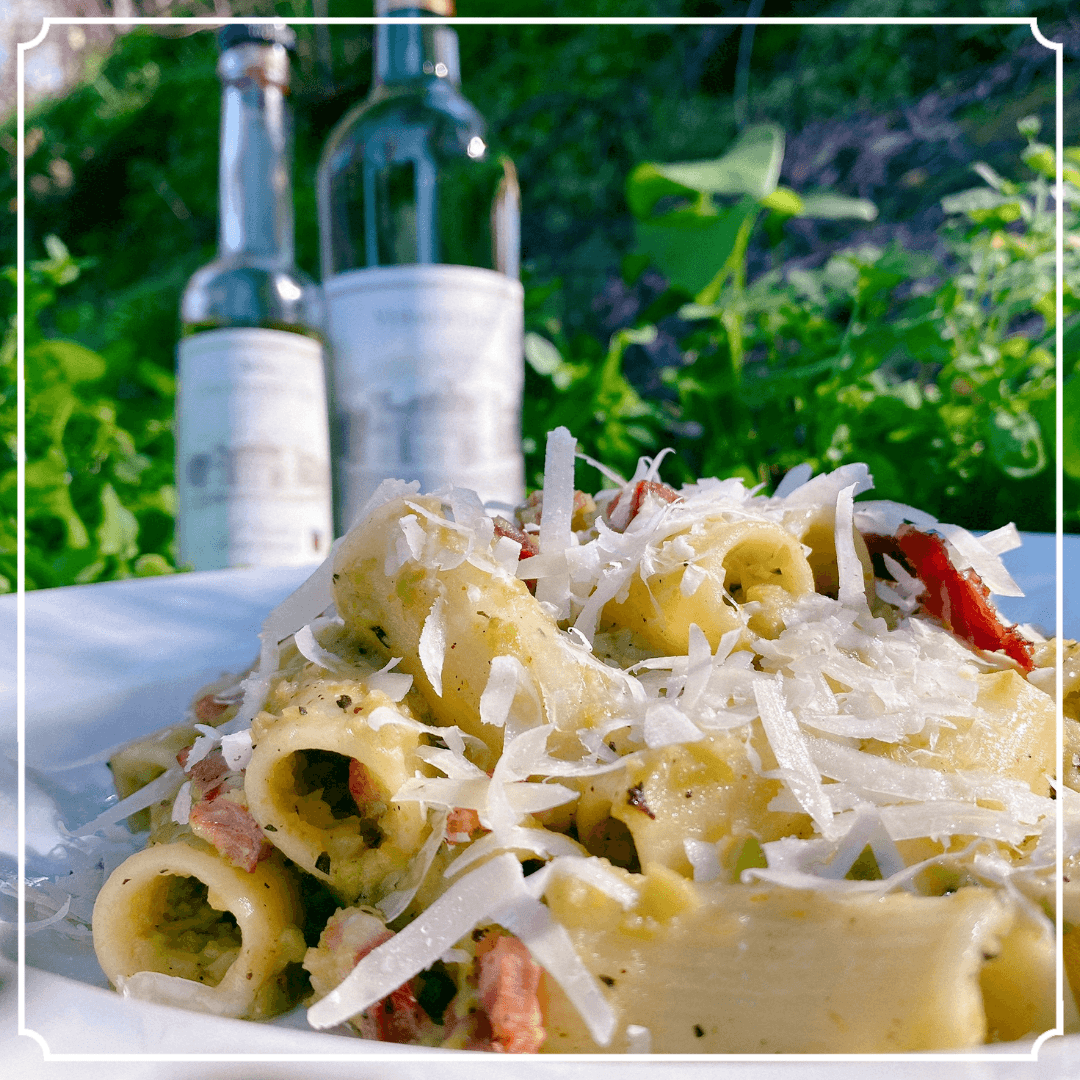
Gioia & Pepper Jack
Dry fruit rosé can handle a little spice and heat. This sangiovese based rosé is no different boasting bright berry and melon flavors. Rosé boasts a versatility that allows it to work well with several different cheeses.
Why it works: The bright fruit can help graze through the spicy notes of Pepper Jack.
Also try: Comté, Monterey Jack
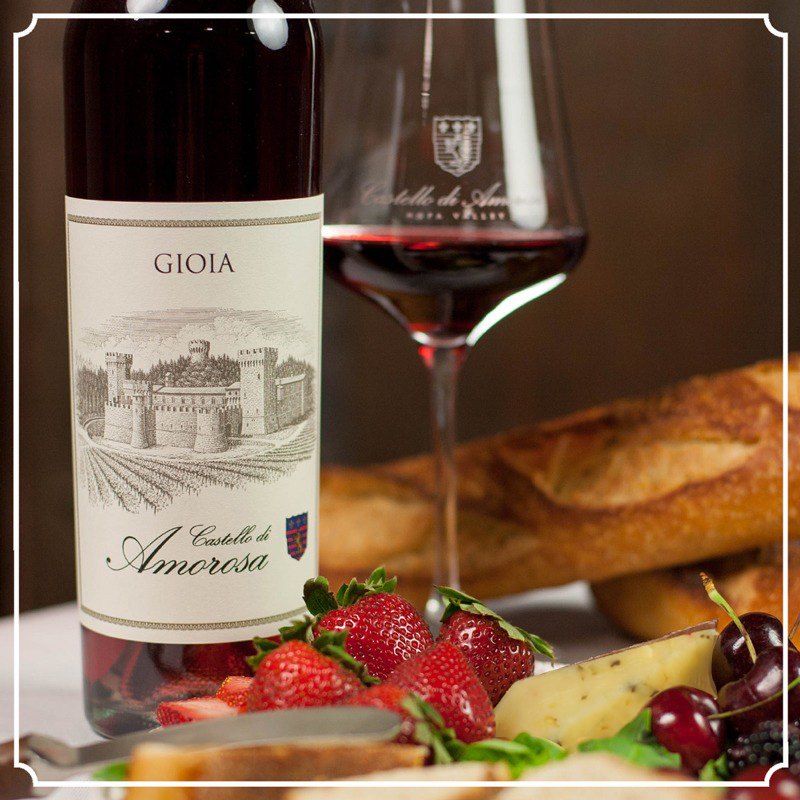
Il Passito (Sauterne Style) & Blue Cheese
Big salty cheese pair wonderfully with the sweet flavors from the sauterne. The sweetness of Il Passito is an excellent foil for the sharp savory flavors of a number of famous and strongly-flavored cheeses.
Why it works: Balance plays a big role in making these combinations so special.
Also try: Blue Cheese (Stilton or Roquefort), Port Salut, Red Square, Triple Cream Brie, Epoisse
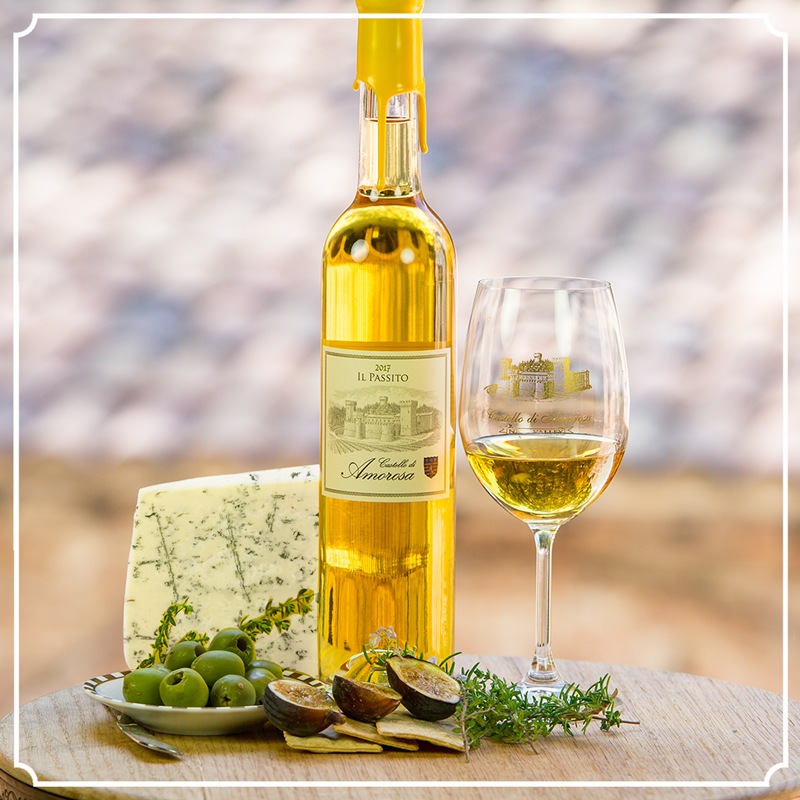
Moscato & Gorgonzola
Moscato is a sweet, fruity wine with hints of candied peach, orange blossom, and honeydew melon. Gorgonzola is a blue cheese that ranges from creamy and soft to firm and crumbly. It’s full-flavored with earthy undertones of saltiness. The age of Gorgonzola determines the overall creaminesss. This wine & cheese pairing is also tremendous with the addition of honey.
Why it works: The sweet notes of the Moscato is balanced perfectly with the salty flavors from Gorgonzola.
Also try: Munster

Ziti Rigati w/ Pesto Guanciale & Romano

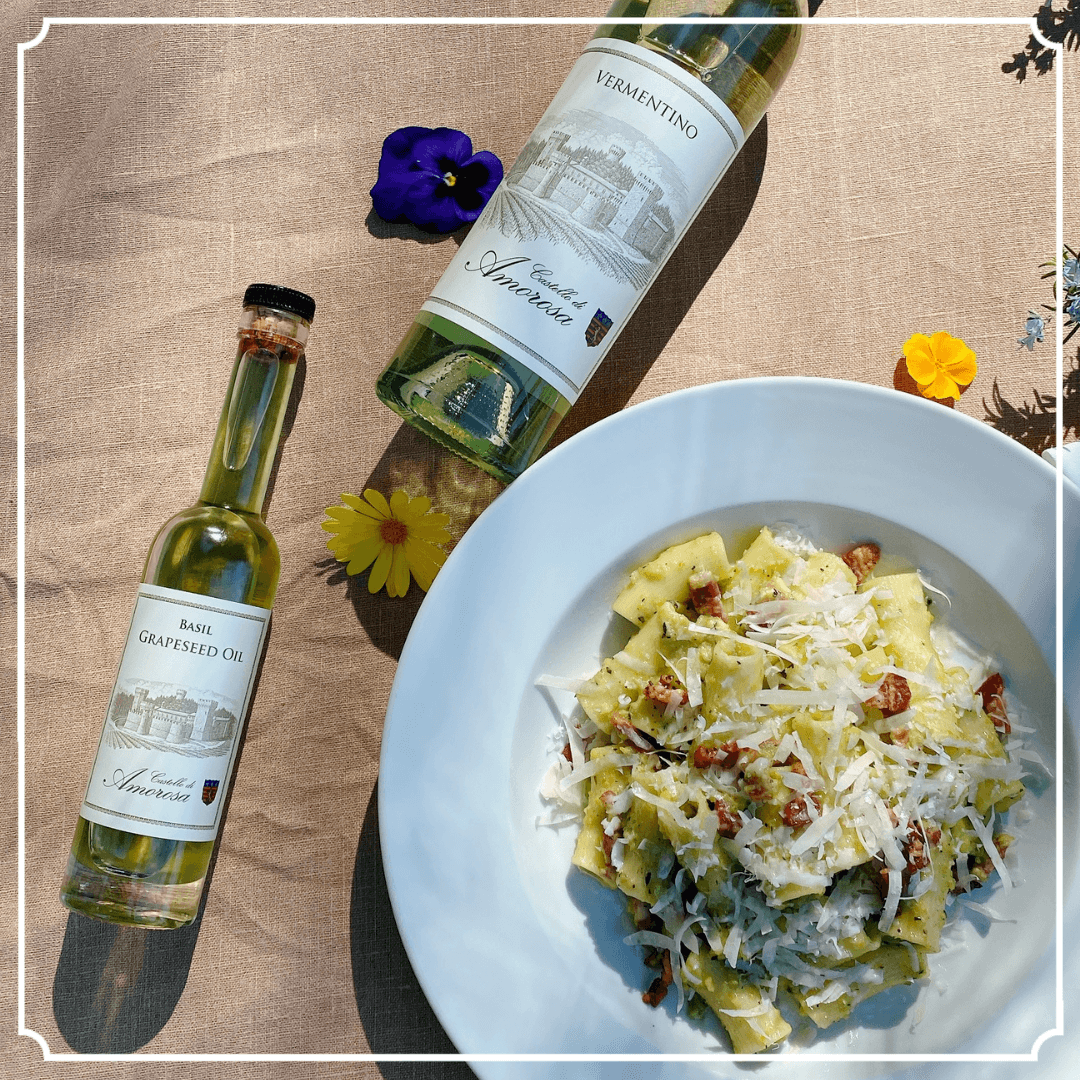
Recipe Date: March 1st, 2021
Difficulty: Easy-Moderate
Measurements: Imperial (US)
Ziti Rigati with Fava Bean Pesto Guanciale & Pecorino Romano
From Amy Gulick Italy Magazine
When asked to create an Italian-inspired dish using Castello products, Executive Chef of Oak Avenue Catering, Shannon Kelly delivered! “My inspiration for our pasta dish is simply SPRING! In the middle of Winter I crave the warmth and sunshine of springtime. Fava beans express to me the essence of spring and I feel this dish utilizes these simple but flavorful ingredients to capture springtime on a plate.” Footage of the chef recreating the dish coming soon!
Oak Avenue Catering Fava Bean Pesto
Ingredients
- 2 cups fresh or frozen fava beans
- ¼ – 1/2 cup grated Pecorino Romano or Parmesan cheese
- 1/2 cup Castello Basil Grape Seed Oil
- 1 Tablespoon chopped fresh thyme
- Grated zest of 1 lemon and juice
- Salt to taste and a pinch of red pepper flakes
Directions
Put favas into the bowl of your food processor along with the cheese, zest, juice, salt and red pepper flakes and pulse a few times. Add the oil and continue to pulse until you have a somewhat chunky but
amalgamated pesto. Taste the pesto and season. Process longer if you want a smoother consistency.
Ziti Rigati with Fava Bean Pesto Guanciale & Pecorino Roman
Ingredients
- 4 ounces guanciale or pancetta, cut into thin strips
- 1 pound of Castello-imported Ziti Rigati Pasta
- Castello Basil Grape seed Oil
- Salt for cooking pasta
Directions
Cook your pasta al dente in plenty of salted water, and in the meantime cook thin strips of guanciale/pancetta in grape seed oil until just turning crisp. When the pasta is ready add it to the guanciale/pancetta along with several scoops of your pesto, some grated pecorino Romano and freshly ground black pepper. Add a small amount of pasta water to make a creamy sauce. Sprinkle some more grated Romano cheese and drizzle some basil grape seed oil over the top and serve with a glass of Castello Vermentino!
Notes
Yield: 6 servings | Prep & Cook Time: 1 Hour
Enjoy and cheers!
March 2021 Competition
The entry rules are as followed:
- Recreate Chef Kelly’s Fava Bean Pesto and Pasta recipe!
- Extra points if you purchase the Castello Fava Bean Pesto Pasta ingredients Pack and a bottle of Vermentino!
- Click here to purchase Fava Bean Pesto and Pasta pack
- Post a photo of your completed dish on Instagram with a bottle of Castle wine and a beautiful Spring –inspired tablespace
- Tag @thecastello #thecastellorecipes in your caption
- And DM us your completed post to our @thecastello account with your name and email to secure your submission!
- The competition ends March 22nd and we will announce the winner on Instagram Wednesday, March 24th, 2021!
Call Wine Club with any questions at 7079676274!
Wine Pairing – Vermentino
Florentine-Style Steak

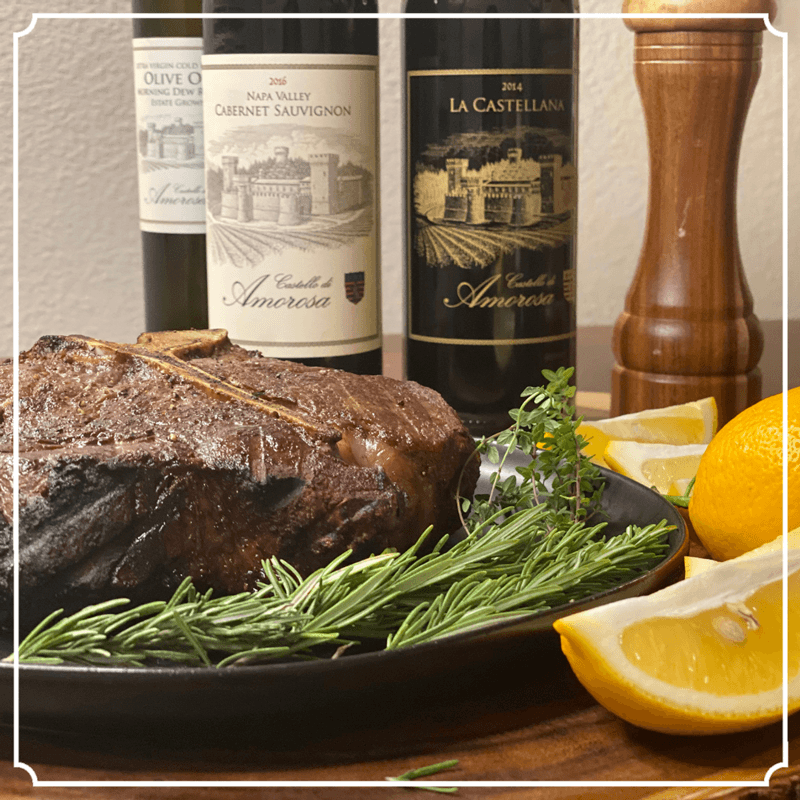
Recipe Date: February 1st, 2021
Difficulty: Easy-Moderate
Measurements: Imperial (US)
Bistecca Alla Fiorentina (Florentine-Style Beef Steak)
From Flapper Press
In the 16th Century, the Piazza San Lorenzo served as an international crossroads in Florance, Italy. When the English knights visited the Piazza, they would express their appreciation of the Florentine Streak shouting “beef steak,” influencing the Florentines naming the meat “bistecca.” This Florentine beef steak, typically the T-Bone of a cow, is grilled over charcoal for a caramelized outside with a rare and juicy inside.*
Ingredients
- 1 Porterhouse steak, cut 2-3 inches thick, 3-3.5 pounds
- Extra Virgin Olive Oil
- Coarse salt and ground black pepper, to taste
- 2-4 sprigs of rosemary (optional, for serving)
- Lemon wedges (optional, for serving)
Directions
Prepare your grill, with coals or wood embers. Using an electric grill or cast-iron griddle would work as well.
Heat the surface of the grill. Place the Porterhouse steak standing on the bone to warm the interior and soften the fat fiber. Continue for about 15 minutes.
Now heat the grill to a very high temperature. Place the steak on its’ side for 5 minutes without moving the meat. The meat should roast without burning and come away with beautiful grill markings.
Final Touches
When the meat is done to your liking, remove it from the grill and let it rest for about 15 minutes in a warm place for the juices to settle.
Carve the filet and strip the steaks off the bone. Slice each steak against the grain and place on a serving platter with lemons, rosemary, and salt.
Notes
Serves: 3-4 People | Cook Time: 25 min
Enjoy and cheers!
Wine Pairing – Il Barone or Cabernet Sauvignon
Cacio e Pepe

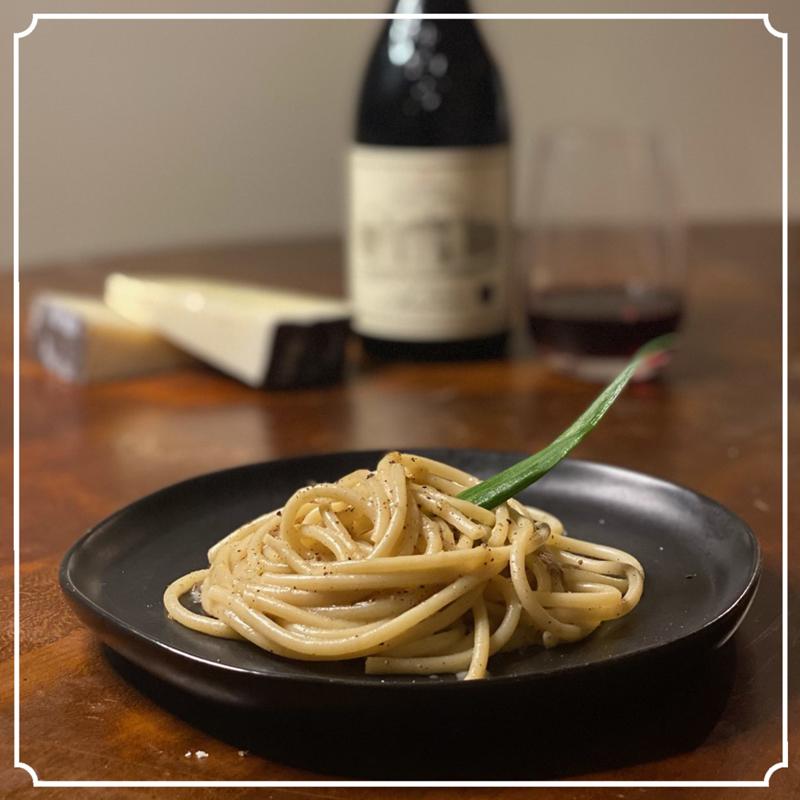
Recipe Date: December 2nd, 2020
Difficulty: Easy
Measurements: Imperial (US)
Cacio e Pepe
From Laura in The Kitchen
The Cacio e pepe pasta, an incredible dish of the ancient Roman Sheppards’ dating back to the 5th century. This remains a simple dish for the everyday people that is now quite famous in Italian cuisine. We are pairing this pasta with our Pinot Noir that gives a complimenting spice when paired together. The recipe below is by Laura Vitale of the Laura in the Kitchen Youtube channel. She began cooking in the kitchen of her Grandmother in Naples, Italy and brought her love of creating “food that feeds the soul” to the United States.
Ingredients
- 8oz of Spaghetti
-
3oz of Finely Shredded Pecorino (see notes below)
-
1-1/2 tsp of Freshly Ground Black Pepper
- Salt
Directions
• Fill a pot with water, add a generous pinch of salt (not too much) and bring to a boil, add the pasta and cook 2 minutes shy of package instructions.
• In a large skillet (I prefer a non-stick heavy duty skillet here) add the ground black pepper, toast for about a minute, meanwhile reserve a couple of cups of starchy cooking water and set aside while you drain your pasta.
• Add 1/2 cup of the starchy water to the bowl of shredded cheese, stir and set aside.
• Add an additional 1/2 cup of the starchy water to the skillet with the pepper, then add the spaghetti (make sure the heat is on low) and start adding your cheese mixture, constantly stirring until Emulsified and adding any additional cooking water if needed. Continue the process until your sauce comes together.
Notes
This dish is one you need to practice, so many things can create a clumpy split mess so I hope these tips help avoid that. Make sure your cheese is grated finely using a Microplane and make sure it’s at room temperature. Keep an eye on the heat level, you might need to remove the pan completely from the burner to avoid overheating the cheese. Avoid using a thin metal pan, it gets way too hot and heats unevenly, most of the time I’ve tried making this dish in anything besides my heavy duty all clad non-stick skillet, it turned out a mess. Don’t over-salt your water, I know it looks like I added a lot of salt in the video but keep in mind I don’t use fine table salt, I use coarse kosher salt so it’s technically triple the size of a regular fine salt. This is a dish that needs to be eaten HOT, right off the stove and traditionally it should be served on warm plates to keep the sauce from setting and hardening the second it hits a cold surface. Use the best (imported if possible) pecorino Romano you can find, if you use a cheaper version or pre-shredded I can guarantee you it will clump in a second! I also use a bit more cheese but it’s easier to start with 3oz and once you have the technique down you can add another ounce. I hope these tips help, for such a simple dish it’s the technique that really matters and it does take some trial and error.
Enjoy and cheers!
Wine Pairing – Pinot Noir, Il Rubino
Deconstructed Albondigas

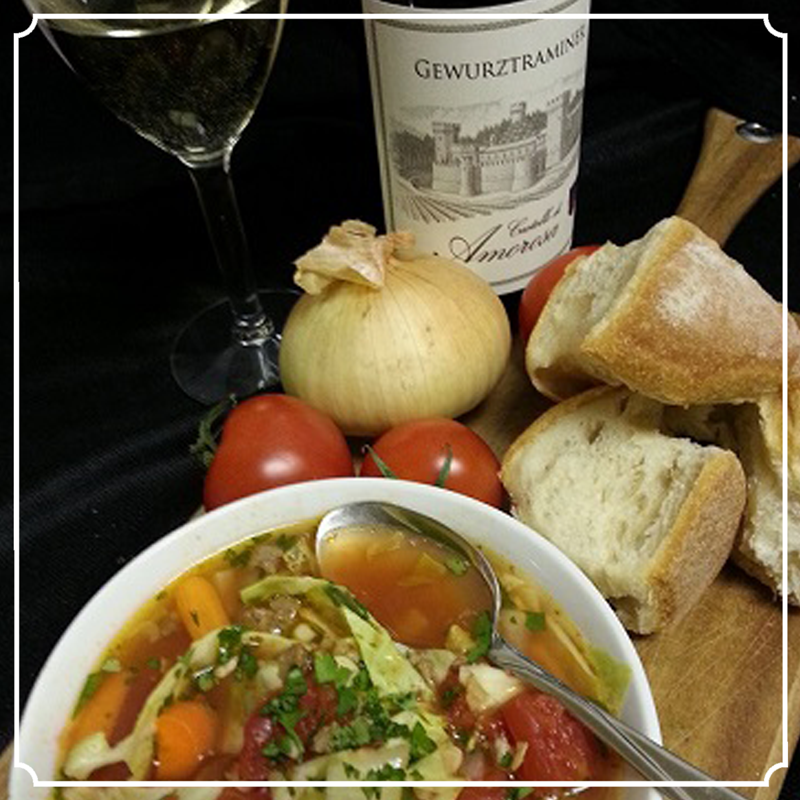
Recipe Date: July 12th, 2020
Difficulty: Easy
Measurements: Imperial (US)
Deconstructed Albondigas Soup Recipe
- 4 cups Beef Broth
- 4 cups Chicken Broth
- 2 Large cans crushed tomatoes (28 oz)
- 2 Large cans diced tomatoes
- 1 lb Ground beef
- 1 lb Spicy sausage
- 2 Heads of cabbage, cored and diced
- 1 Small bag frozen white corn
- 5 Carrots thinly sliced
- 5 Stalks diced celery
- 4 Large cloves minced garlic
- 1 Bunch chopped cilantro (set some aside for garnish)
- 1 Large diced brown onion
Brown ground meat and/or sausage. Add to a large pot with all other ingredients. Cook over medium low heat until vegetables are to desired softness. To accelerate the cooking process, give the veggies a quick sauté before adding to the pot. Stir and taste often and, as always, add seasoning as needed.
Prep Time: 30 mins
Cook Time: 45-60 mins
Related Products – Dry Gewurztraminer
Fritatta

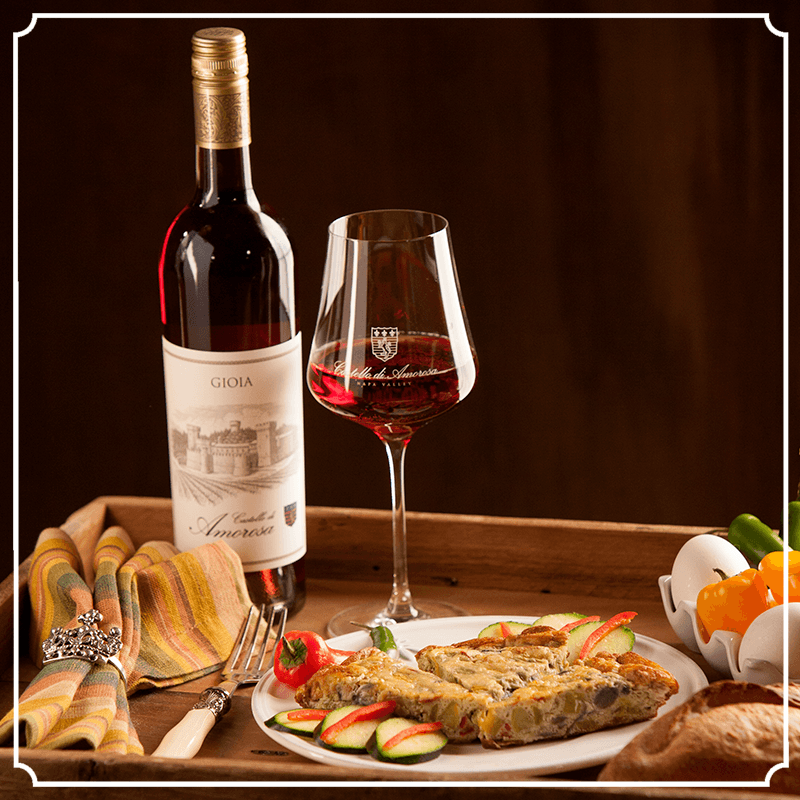
Recipe Date: March 2nd, 2020
Difficulty: Easy
Serving Size: 4
Cook Time: 00:15
Measurements: Imperial (US)
Easy Breakfast Frittata
Ingredients
A Frittata can be made with an assortment of ingredients; mushrooms, broccoli, cauliflower, or zucchini. For a heartier main course preparation, ground sausage, bacon or potatoes can be included. To make a frittata, beaten eggs are cooked briefly in a hot skillet along with other ingredients like onions, spinach, bacon and/or potatoes, and then topped with cheese and finished in the oven.
The Castello provided the bounty for this frittata. The royal chickens supplied the organic free range eggs. From the castle garden; zucchini, red and yellow pepper and serrano chili peppers.
Directions
♦ In medium size bowl, using a fork, blend together 4 – 6 eggs, grated Parmesan, 1/2 tsp pepper, and 1/4 tsp salt.
♦ Heat 12-inch non-stick, oven safe saute pan over medium high heat.
♦ Add butter to pan and melt. Add frittata contents. Pour egg mixture into pan and stir with rubber spatula.
♦ Cook for 4 to 5 minutes or until the egg mixture has set on the bottom and begins to set up on top.
♦ Sprinkle with parsley and additional grated parm.
♦ Place pan into oven and broil for 3 to 4 minutes, until lightly browned and fluffy.
Related Products – Gioia
